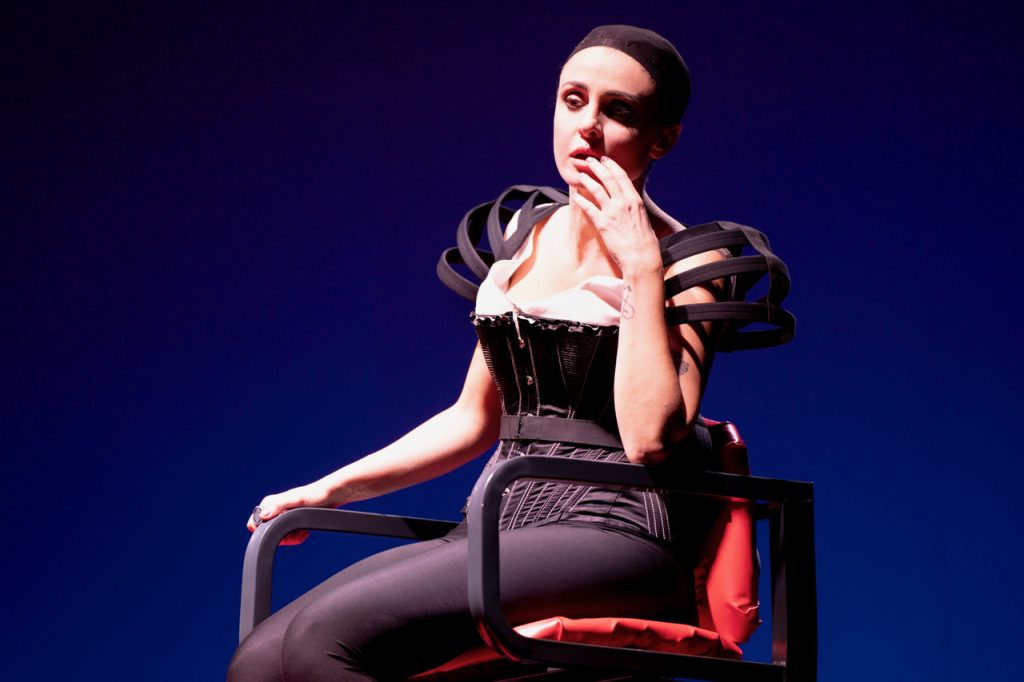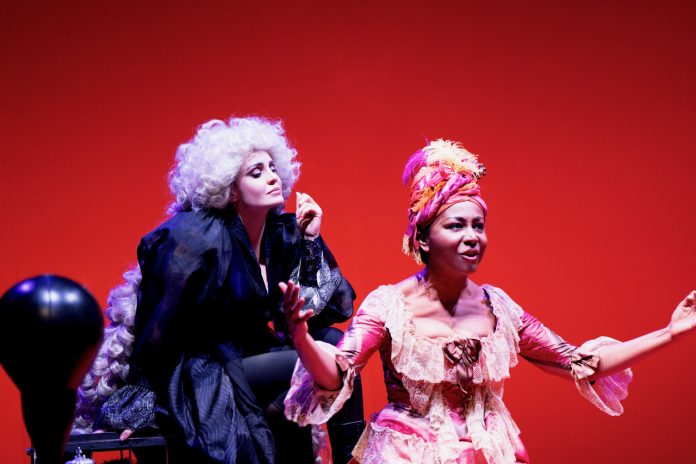by InTrieste
The image of Empress Elisabeth of Austria—known as Sissi—has long been enshrined in popular culture: a glamorous beauty, a tragic heroine, a queen of grand palaces and gilded carriages. But a new theatrical production, Sissi the Empress, which opened March 25 at Trieste’s Sala Bartoli, peels away the legend to reveal the woman beneath the crown.

Written and directed by Roberto Cavosi and starring Federica Luna Vincenti, the play takes an unflinching look at the restless and often tormented life of the 19th-century monarch. A co-production of Teatro Stabile del Friuli Venezia Giulia, Goldenart Production, and Teatro Stabile di Bolzano, the show presents Elisabeth not as a romanticized royal, but as an independent, rebellious figure caught between personal demons and an empire on the verge of collapse.
“Her story has been wrapped in fairytales for too long,” said Vincenti, who plays the empress. “But she was also a woman in deep conflict—with her family, her role, her body, and the world around her.”
Born into the Bavarian aristocracy in 1837, Elisabeth married Emperor Franz Joseph I of Austria at 16 and soon found herself at odds with the rigid Habsburg court. Renowned for her beauty and famously obsessive about maintaining it—she followed extreme diets, exercised compulsively, and spent hours tending to her floor-length hair—she also suffered from depression, mourned the early deaths of two of her children, and sought solace in poetry.
The play captures Elisabeth’s contradictions, from her fascination with revolutionaries and political exiles to her scathing criticisms of the aristocracy she belonged to. “A depraved lineage,” she once wrote of the Habsburgs. She saw her own existence as a paradox: a woman longing for freedom yet trapped in a world of privilege.
“She was anti-imperialist but lived at the heart of an empire,” said Cavosi. “She fought against social injustices but was herself an empress. She was both a symbol of her time and a woman completely ahead of it.”
Elisabeth’s diaries, long censored by the Austrian court, provide the basis for much of the play’s dialogue. In them, she speaks candidly about her body image struggles, her feelings of isolation, and her contempt for the Viennese court. Her sharp wit and self-deprecating humor mask a deeper pain—one that follows her until her assassination in 1898 by an Italian anarchist in Geneva.
The production is visually stark, with a set that strips away the opulence typically associated with Elisabeth’s story. Instead of gilded ballrooms, audiences will see an abstract, fragmented space that reflects the empress’s fractured state of mind. Costume designer Paola Marchesin and lighting designer Gerardo Buzzanca contribute to this minimalist aesthetic, while an original score by Oragravity underscores the character’s emotional turmoil.
Beyond history, Sissi the Empress also offers a reflection on contemporary themes—mental health, the pressures of image and identity, and the constraints placed on women in the public eye. In an era that continues to wrestle with the tension between personal freedom and societal expectation, Elisabeth’s story resonates more than ever.
The play runs through March 30, with tickets available through Teatro Stabile del Friuli Venezia Giulia’s website.





























